You may not find this terribly rewarding unless you're included here, so this is a good time for casual and random browsers to turn back before they get too caught up in the sweep and majesty of the proceedings and can't let go.
Hasty mid-September 2017 visits mostly around Dubuque
Summer 2017 -- we've had a pleasant and exhilirating time on the lake in northern Wisconsin, but the summer is more or less over, and we're on another road trip to the east coast, with a stop-off for a few days in Dubuque. That's in Iowa.

Today we're on a driving expedition south of Dubuque, along the Mississippi -- there's not much there until Bellevue, 35km to the south, but the bridge shown on the map turned out merely to be Upper Mississippi Lock and Dam no. 12, so it's onward another 30km to the real bridge at Sabulia. (14 September 2017)

The first Mississippi bridge south of Dubuque begins in Sabulia, then zig-zags a bit over various islands . . .

. . . with improvements presently underway. Now it's 45km back northward through Illinois to Galena, widely recommended as a 'destination'.
Galena, Illinois
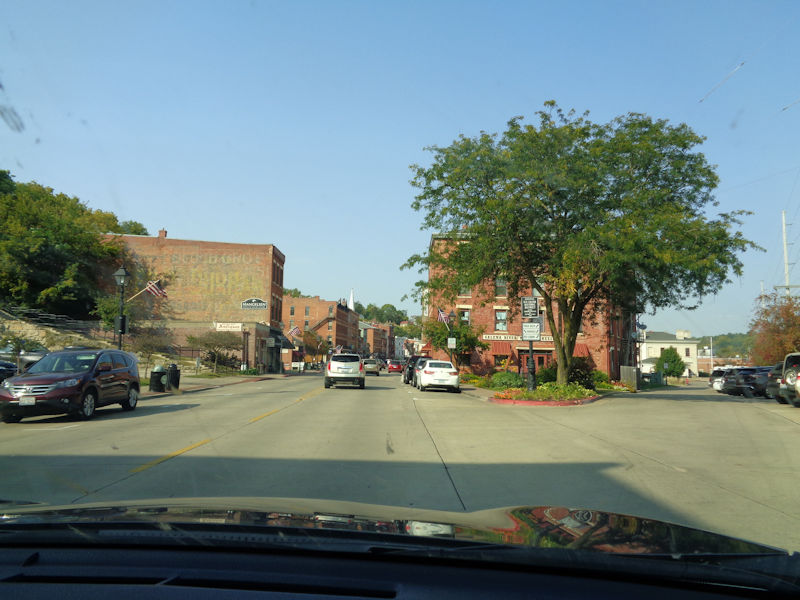
Entering downtown Galena, an historic town of about 3,000 some 20km southeast of Dubuque, the Main Street of which retains considerable touristified charm. We're here to imbibe the 19th century midwestern ambiance as far as possible.

Galena is an important form of lead ore and has been mined here by Native Americans for at least a millennium, then by US citizens under the leasing arrangements of the US War Department from the very early 19th century, with an official lease granted in 1822 to the brother of a US Senator.
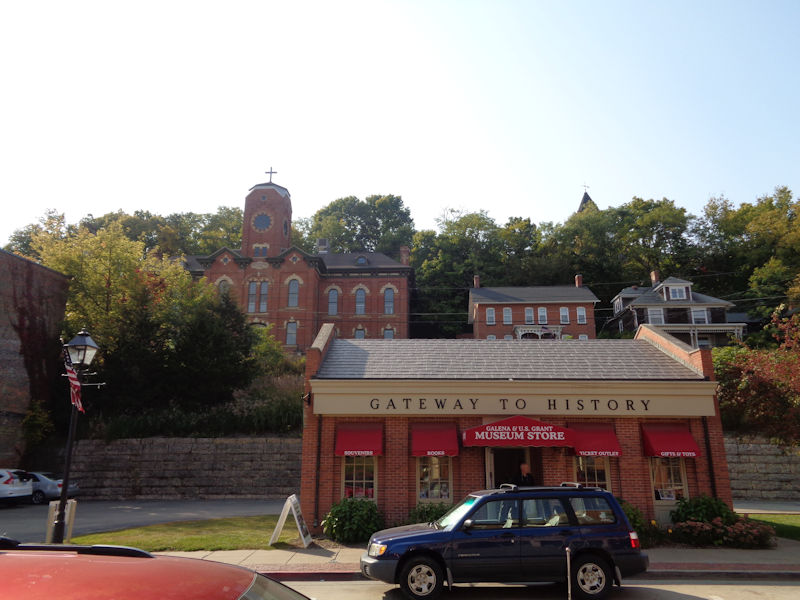
Native American rights to the resources began to impede the growth of the industry, but following the Winnebago War against the Ho-Chunks in 1827, the US government annexed the lead-bearing lands and the town was incorporated in 1835, by which time the population of the minerals boomtown already exceeded that of Chicago.

Lovely old trolleys at the Trolley Depot Company (largely idle today)
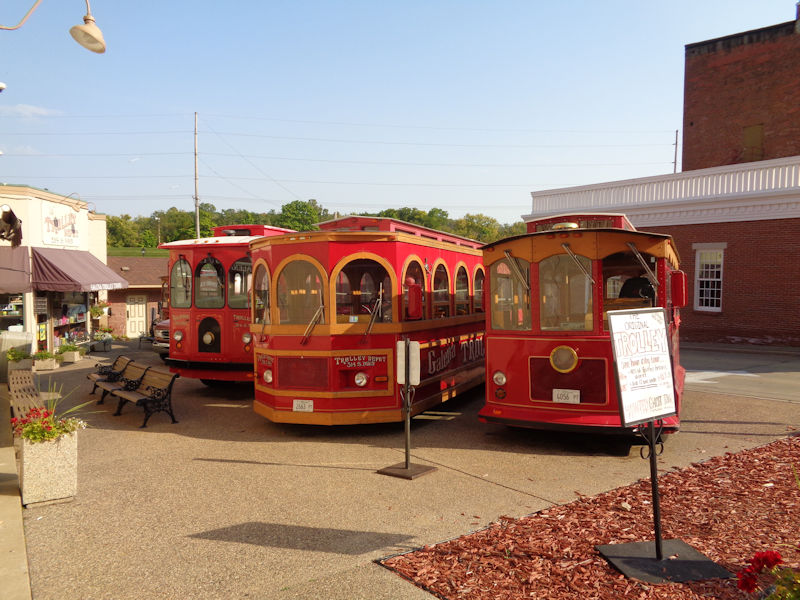
In a hasty inspection, no manufacturer's name leapt out at me, though they look very like Hometown Trolleys.

Most of the good stuff is on Main Street, extending about 700m in a gentle curve along the Galena River.
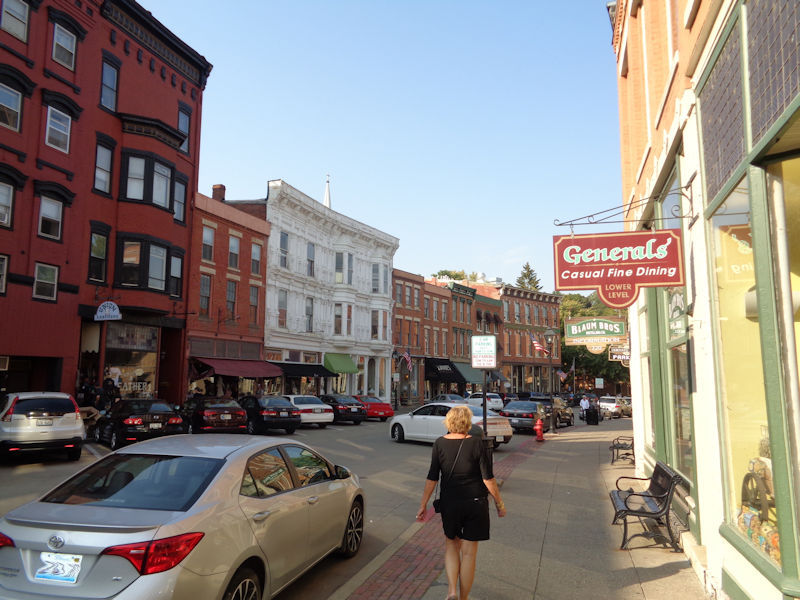
Generals' Casual Fine Dining. Galena has the distinction, presumably that's the right word, of having been the home of nine US Civil War generals, including the commander Ulysses S Grant, later President of the US.
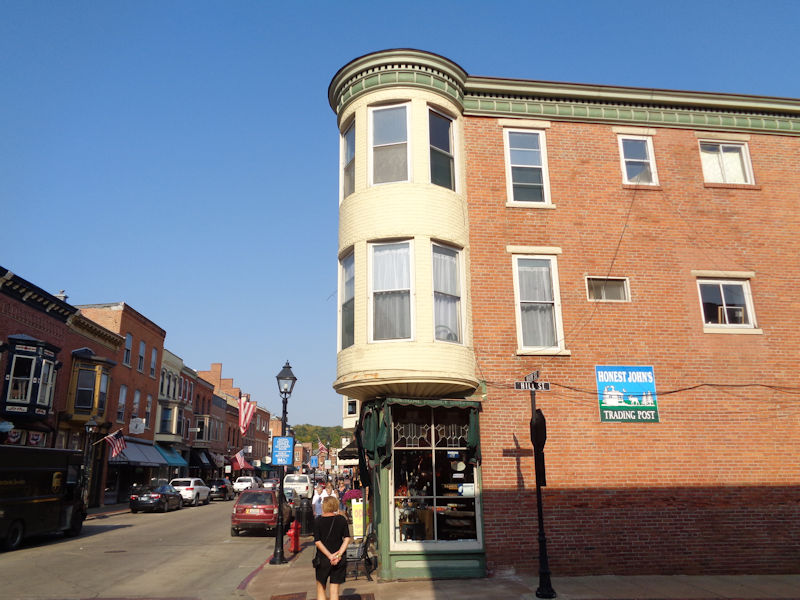
Honest John's Trading Post, with its circular tower
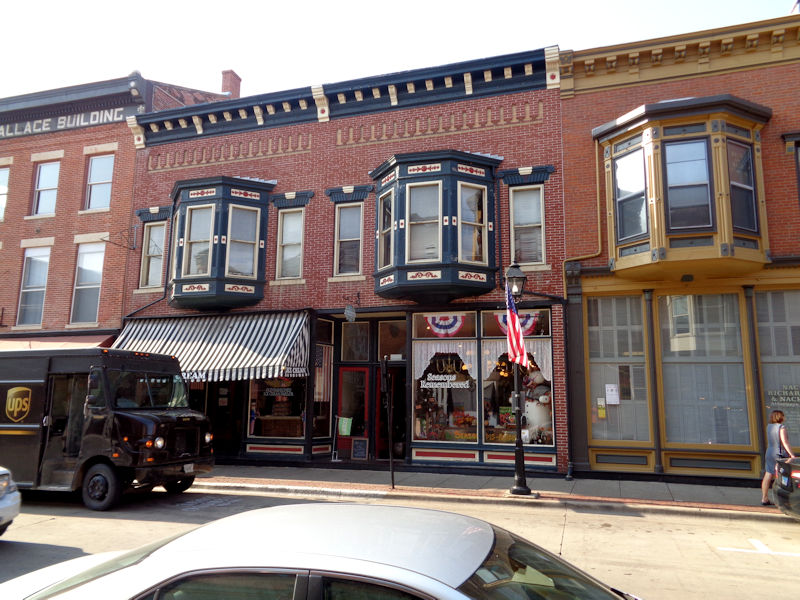
Seasons Remembered, and the Old-Fashioned Ice Cream Parlor

Main Street, Galena
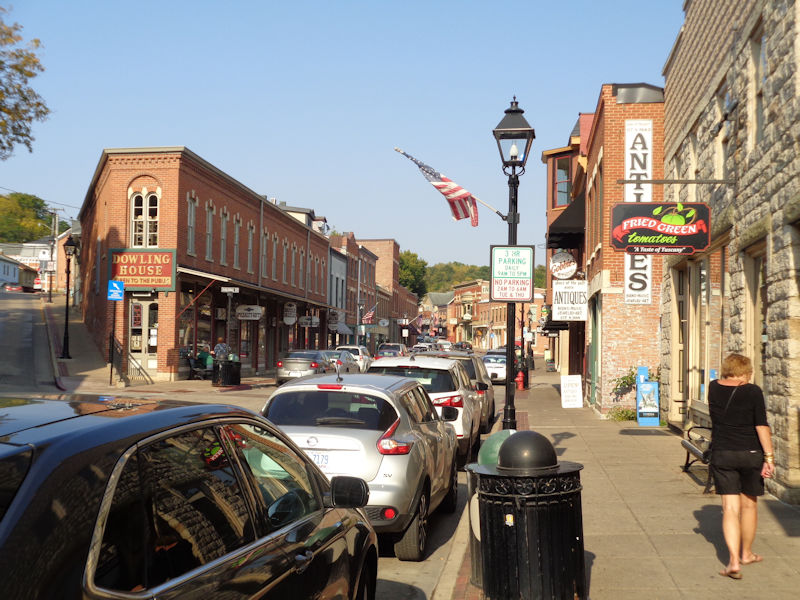
Street scene
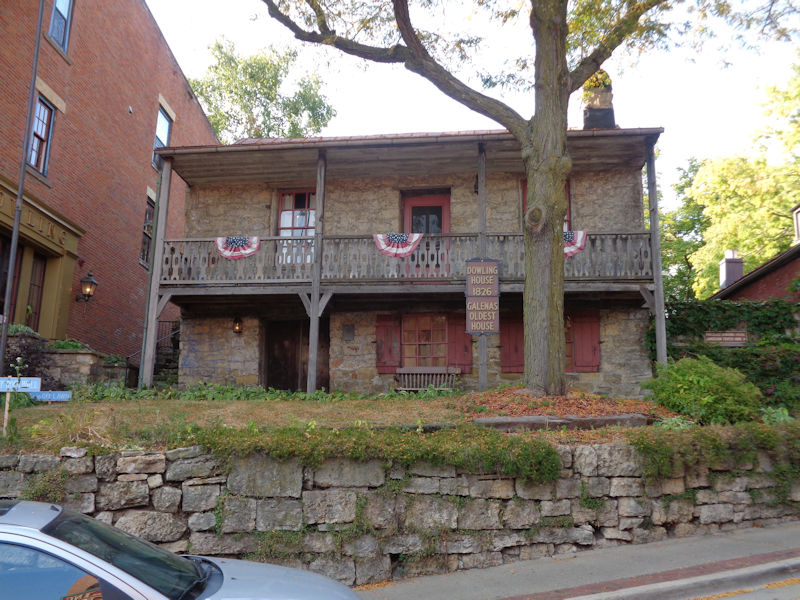
Dowling House, built in 1826, now a little museum

Durty Gurt's Burger Joynt. Yum.

We're walking back on a sort of dike between the town and the mighty Galena River.

Grant Park across the river

A vintage rail station

A competing company, The State Trolley (also apparently a Hometown Trolley). Bye bye to Galena.
Back in Dubuque
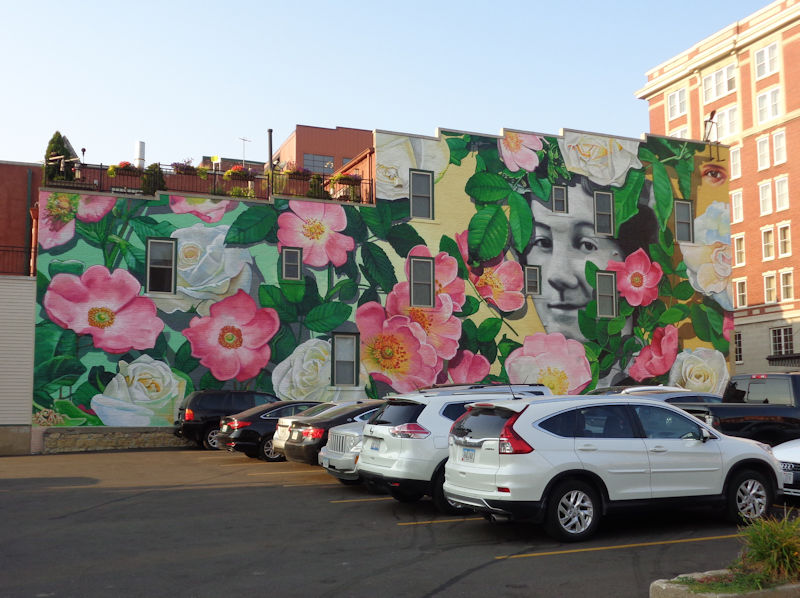
Another Voice Mural Project picture, this one by Gaia of New York, a memorial to a dedicated female botanist from Iowa, Ada Hayden

Downtown Dubuque
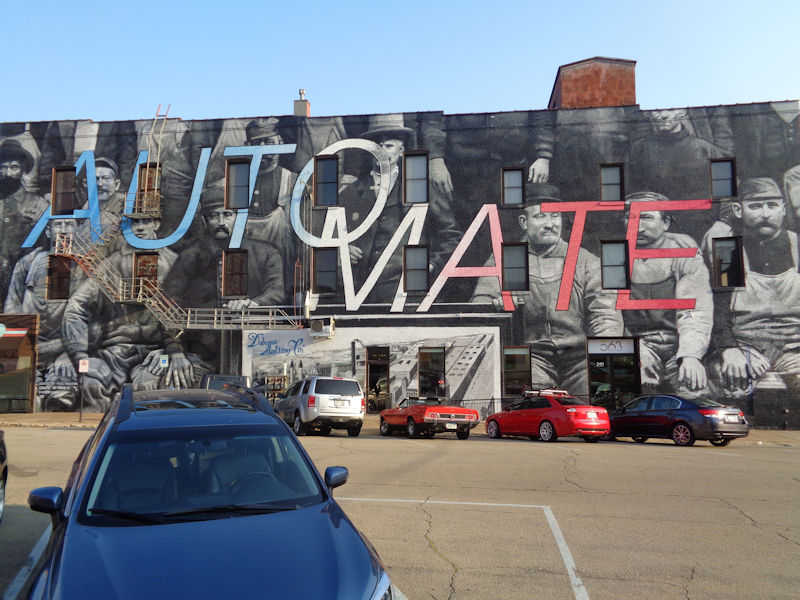
Another by Gaia of New York, 'interrogating the mythology of labor'
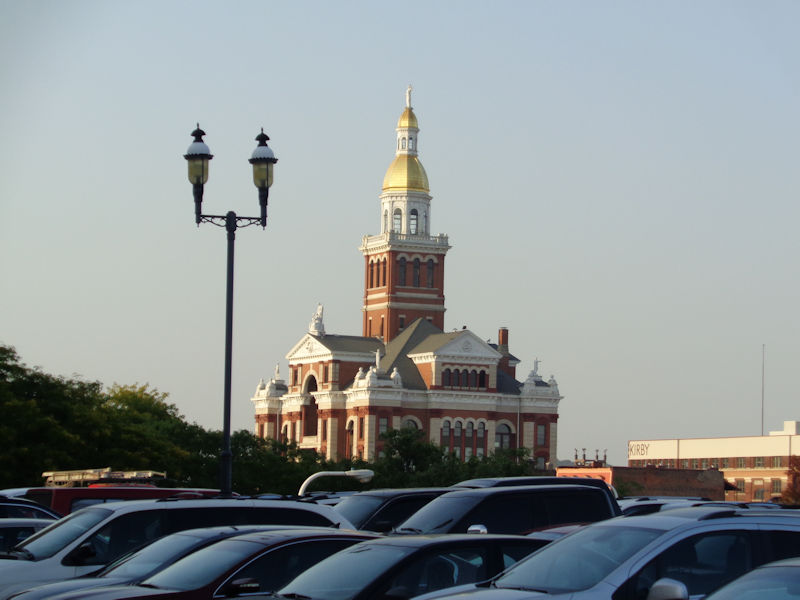
The photogenic Dubuque County Courthouse
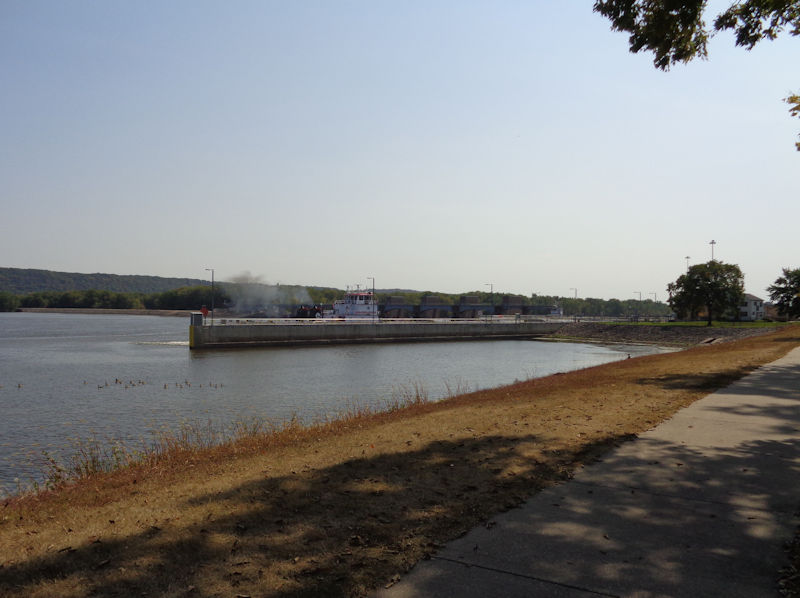
We're driving north to see some mounds, and we've stopped in Guttenberg on the Scenic Route to sit by the Mississippi with some truly dreadful sandwiches from a local café and . . .

. . . view the activities at the Upper Mississippi Lock and Dam no. 10.
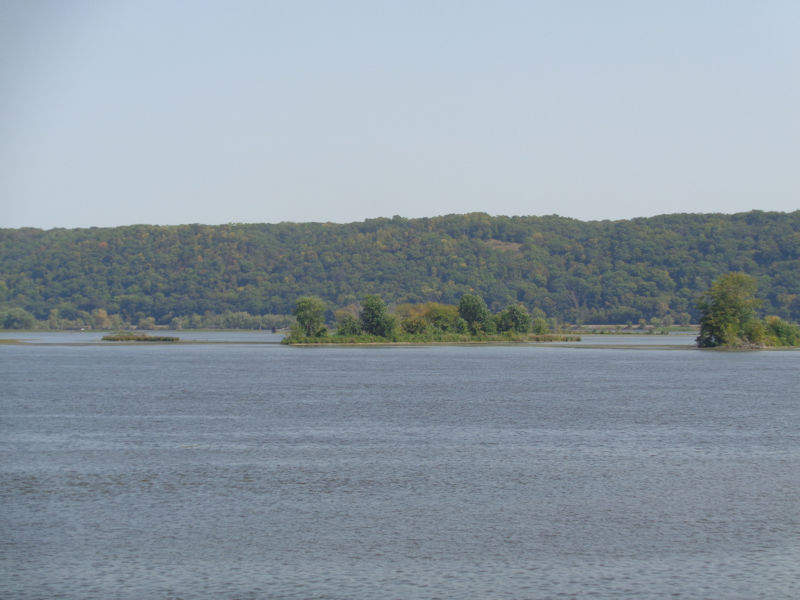
Constructed islands, presumably, in Pool 10 of the Upper Mississippi River

Proceeding through Marquette, Iowa, across the river from Prairie du Chien, Wisconsin, and about to run into some truly perplexing detours.
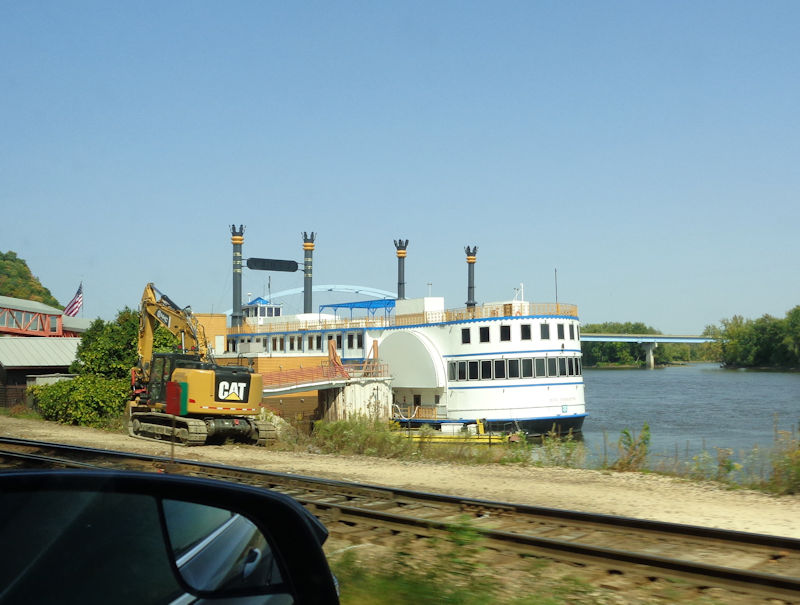
A steamboat appears amongst all the construction . . .
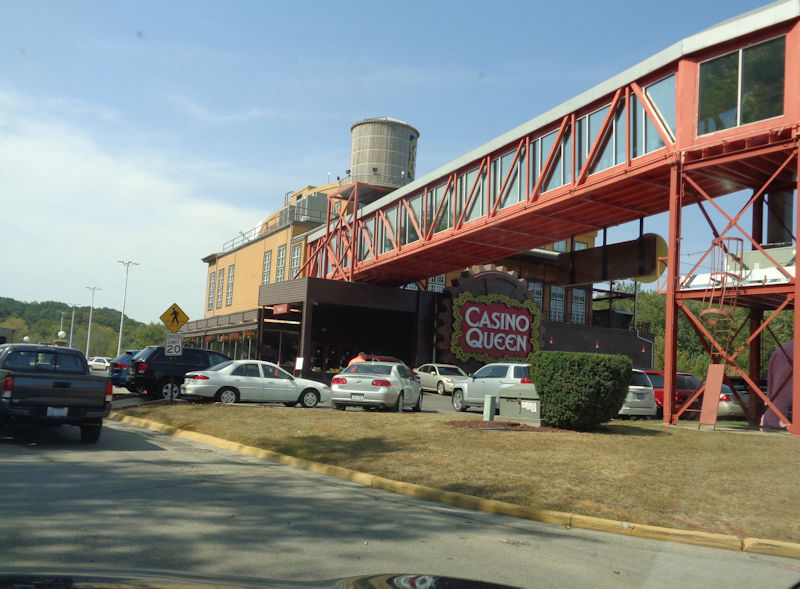
Oh, it's the Casino Queen. Great.

Finally, we've arrived to see some mounds, but with only time left for the shortest walk option. We have, in an unrealistically scheduled appointment back in the south, promises to keep.
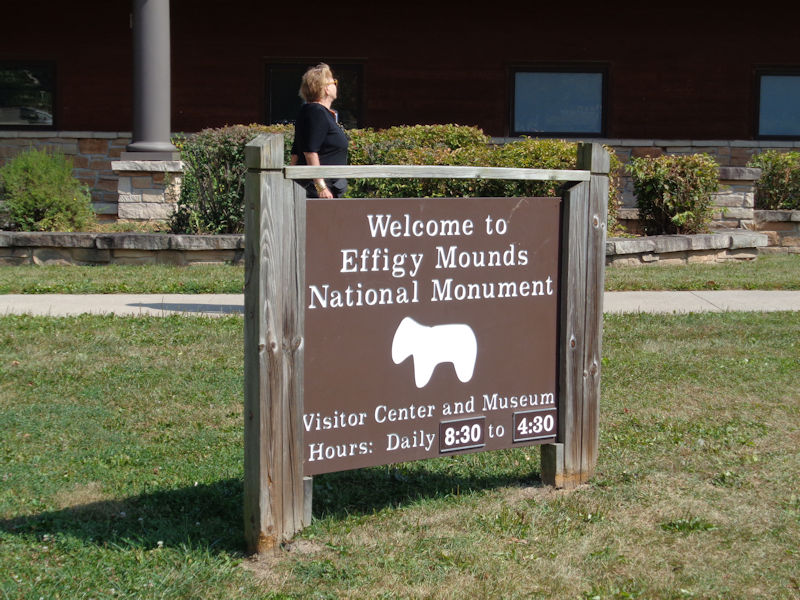
The indigenous Mound Builder cultures continued over five millennia in the Great Lakes, Ohio River, and Mississippi River regions of the American midwest. The Effigy Mounds National Monument has some 200 'effigy mounds', i.e., shaped like animals, built in the first millennium by Native Americans of the so-called 'Woodland Culture'. The effigy style is most commonly found in the unglaciated 'Driftless Area' of southern Wisconsin and northeast Iowa, and this visitors centre is located along the river just north of Marquette, Iowa.
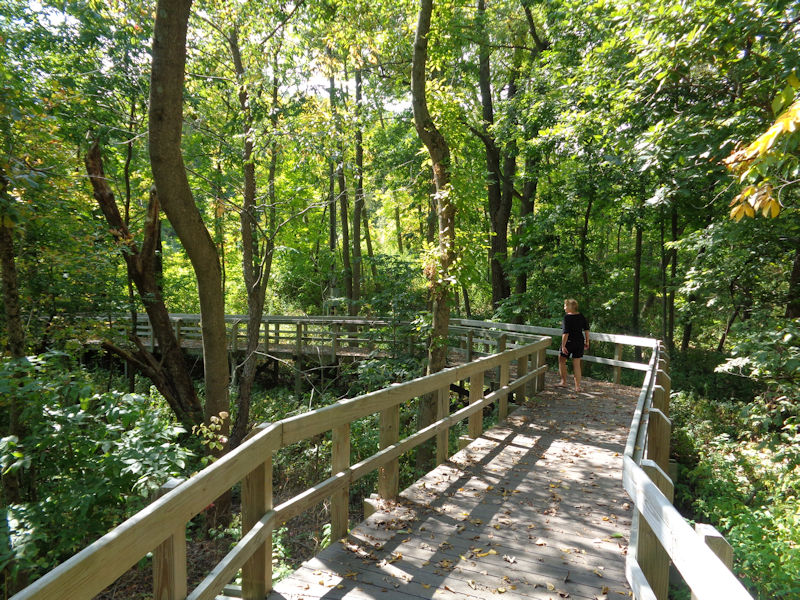
Under the pressures of time, we're off on the shortest of the 14 miles of trails in this park.
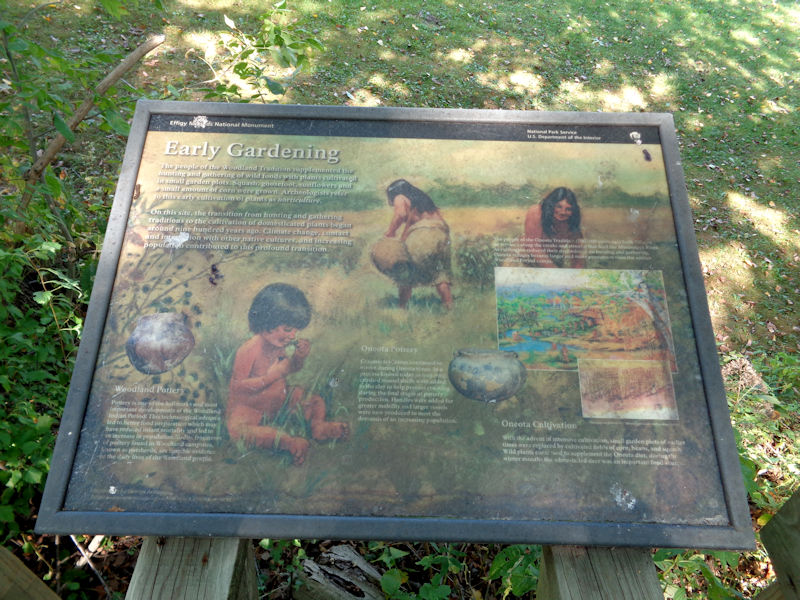
Some weather-beaten information panels along the walk
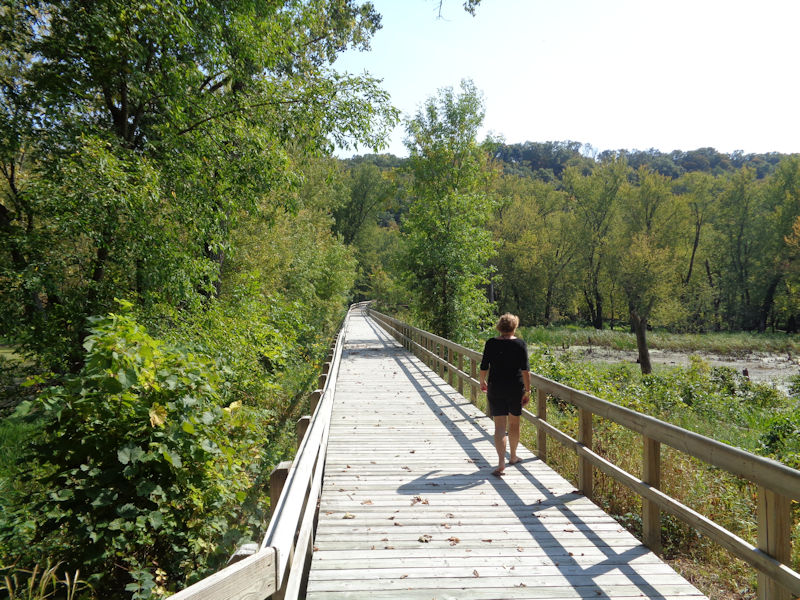
Excellent boardwalks all the way, in the finest tradition of US national parks.

And exemplary swamps

It's not easy to love a swamp, but the boardwalk helps.

And a very nice bridge at the end of our trail. But no Mounds.
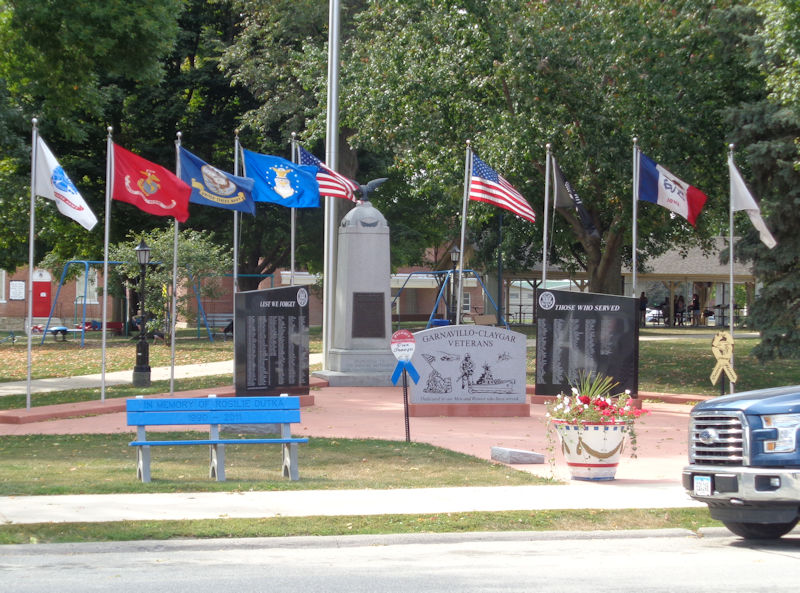
'Lest we forget', dedicated to Our Nations Defenders: in Garnavillo, Iowa, memorials to 'Those who served' and Rosilie Dutka.
Bellevue, Iowa

An unsold condo in Bellevue, Iowa

Open plan livingroom and good Mississippi views from the deck out front

And two small bedrooms, a windowless study of 2x4m, and a private elevator to carry you up 9 feet from the ground floor

Fine views of the Mississippi

Downtown Bellevue, population ca. 2,000 -- originally called Bell View in the 1830s, after John D Bell, later sensibly changed to Bellevue, which is true. Having overcome its bad reputation following the Bellevue War of 1840, the town vied for a time for the honor of being the country seat, but by 1873 had lost out. The city motto is 'a true riverfront experience'.

Upper Mississippi Lock and Dam no. 12

Potentially endless hours of fun watching cargo barge trains passing through the locks
Ten minutes in Athens, Ohio

Passing eastward now, we're stopping in in Athens, Ohio, where I spent a funpacked five years in grad school. First time back in half a century, so there will surely be revelations.
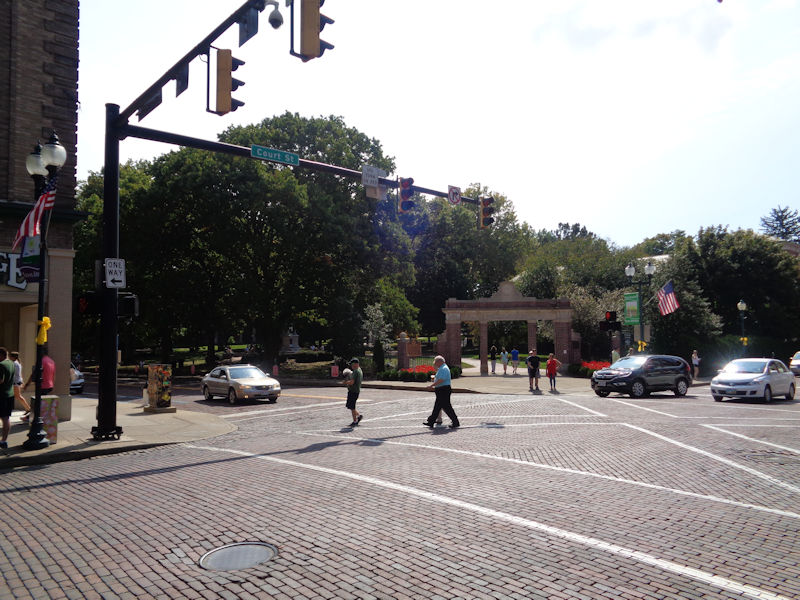
Nothing at all was recognizable, until we stumbled across the gateway at the interface between the Ohio University quad and downtown Athens.
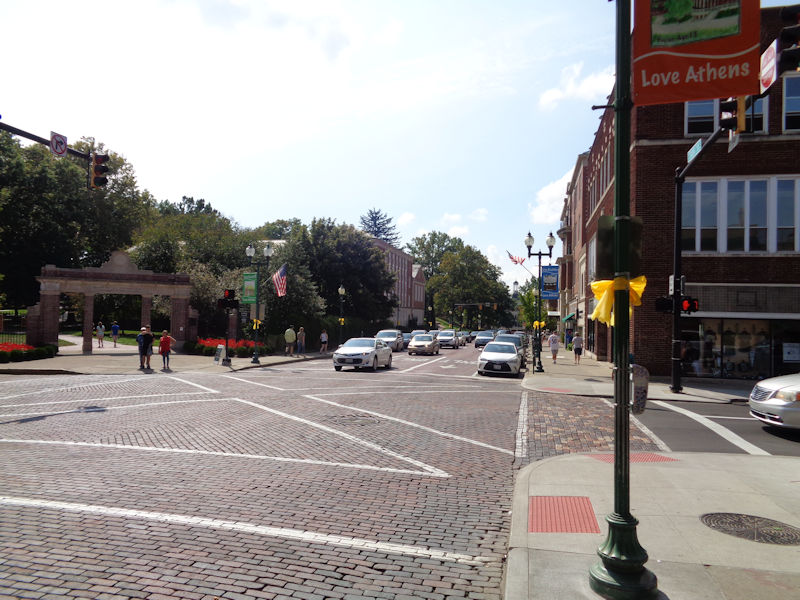
The intersection at Court and Union Streets, scenes ca. 1970 of annual faceoffs between lines of local and state police protecting the shopkeepers' windows and milling crowds of anti-war and merely curious students on the college green, supplemented by a small group of "crazies" who began throwing rocks at the cops and turning the social events into dangerous riots.
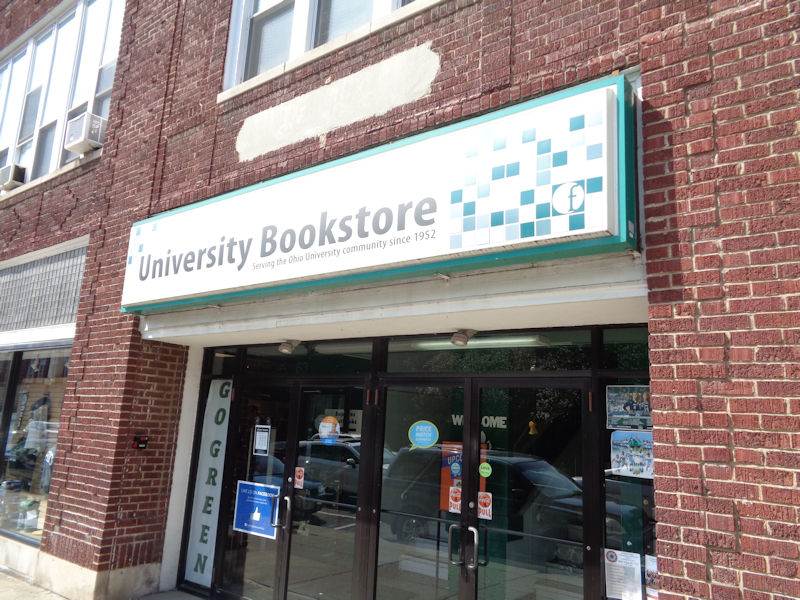
The bookstore on the corner, now part of the Follett's chain of college bookstores, in the late sixties known as Logan's with, amongst the textbooks, sweatshirts, and beer mugs with logos, a scholarly section in the basement that was willing to let an impoverished graduate student run up an $800 tab. A home away from home.
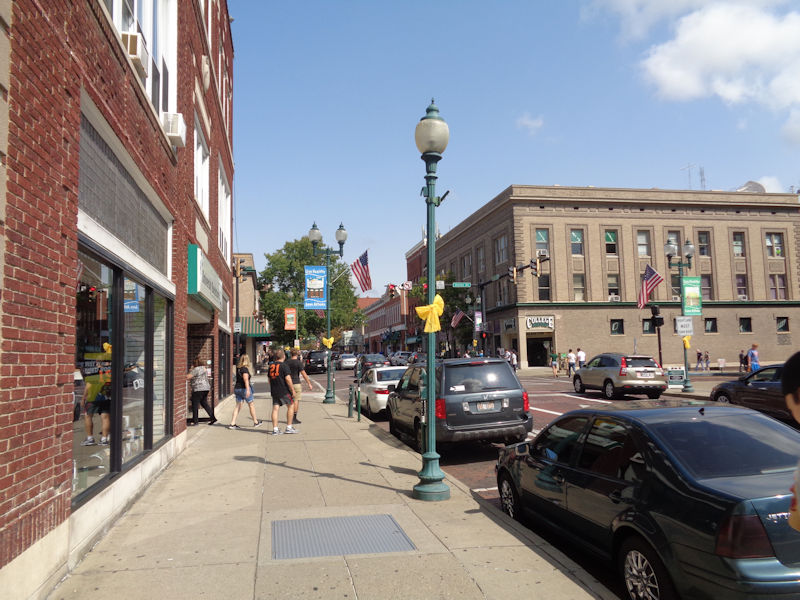
We're used to the idea that young people look younger every year as we get older, but these throngs of young people look almost pre-teen; very unsettling. Happily, it turned out that this was Freshman Day, when the incoming highschoolers were deposited on campus by their solicitous parents.
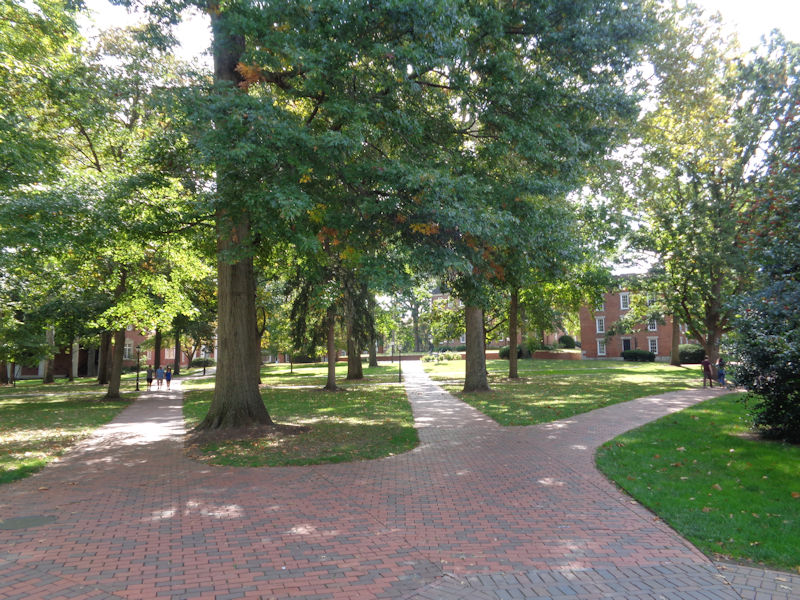
The college green of nostalgic memory . . .
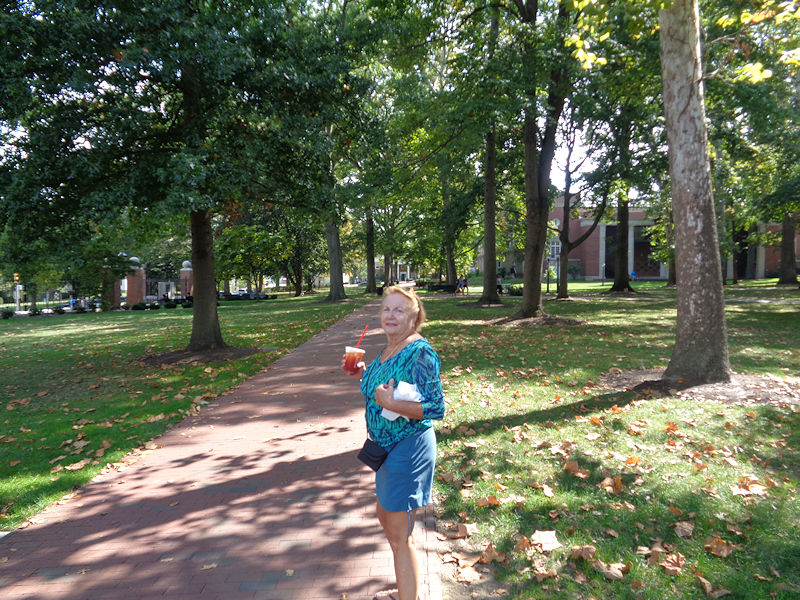
. . . which is becoming tiresome to the rest of our party.
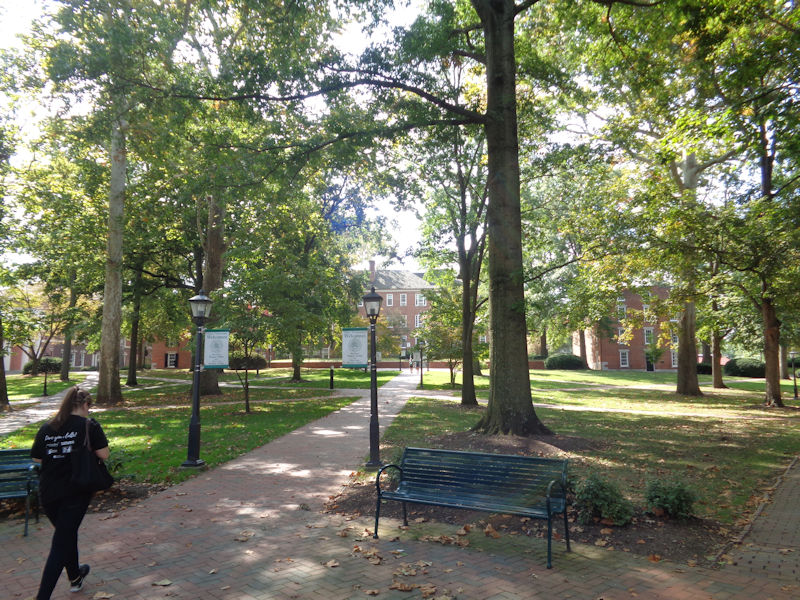
The University seems to have grown enormously, and unrecognizably over that expanse of time, but thankfully they have not touched the green itself.
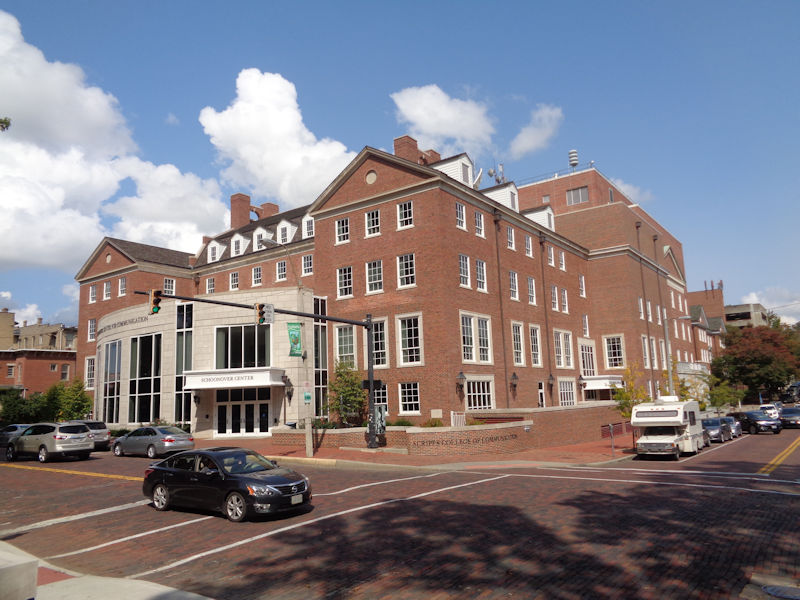
Now a college of communications, but before renovations this was Baker Centre, the student union, scene of many intense debates in the coffee shop about Renaissance drama (and Vietnam, presumably). A new Baker University Centre replaced it just down the hill in 2007. The renovations to the old centre were completed in 2013.
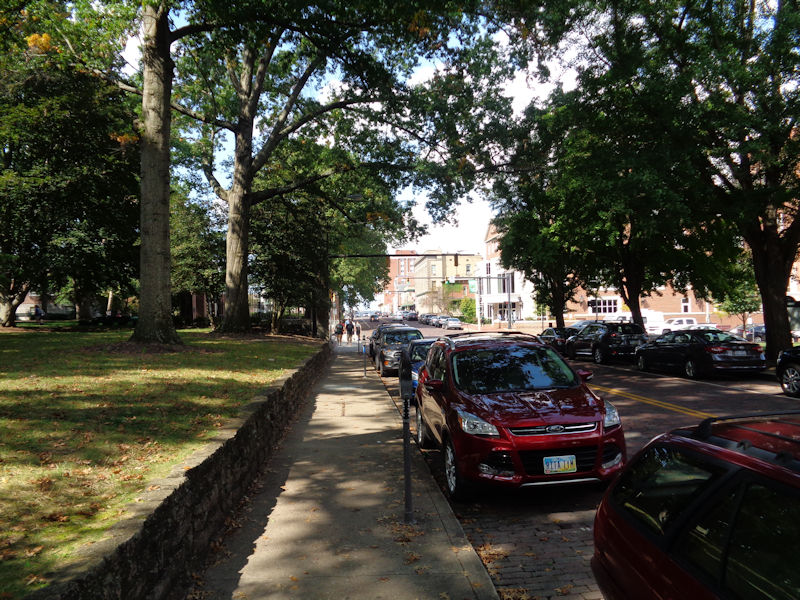
Union Street along the college green, across from the new college of communications building -- more nostalgia. Walking to my office a few days after the Kent State Massacre on 4 May 1970, when Ohio National Guard units gunned down unarmed students, I passed the very same National Guardsmen posted at every parking meter following the forced closing of Ohio University as well. Widely viewed in photos in the Cleveland Plain-Dealer at the time, fully kitted out in their Intimidation Gear and looking like robot-like Star Warriors/Nazi SS death squads, now, without the gas masks and battle postures, they turned out to be skinny, frightened teenagers who'd joined the National Guard to avoid being sent to Vietnam.
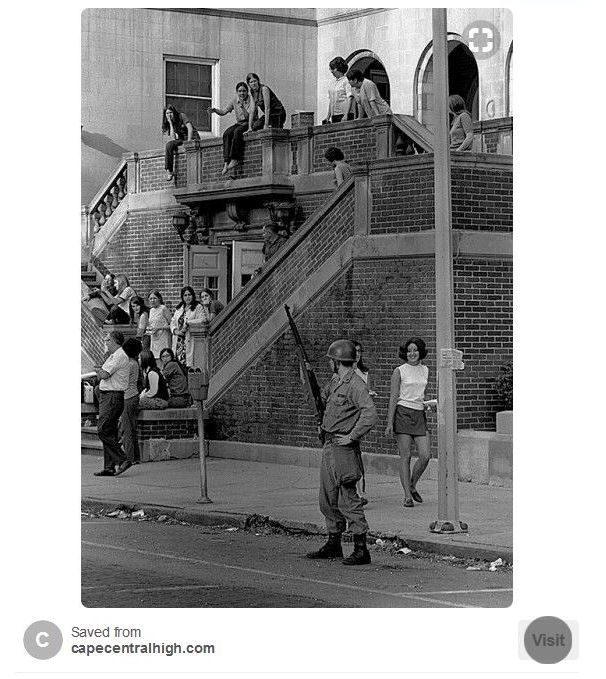
National Guard outside the Baker Centre student union, days following 4 May 1970

Nearly the only other thing I've recognized in our quarter of an hour in Athens, Ohio: Ellis Hall on University Terrace, backing onto the College Green, then as now the home of the English Department.
Onward to Leesburg, Virginia, for a few days of errands, and then to the Dulles International Airport and back home.
 Dwight Peck's personal website
Dwight Peck's personal website











































































































































































